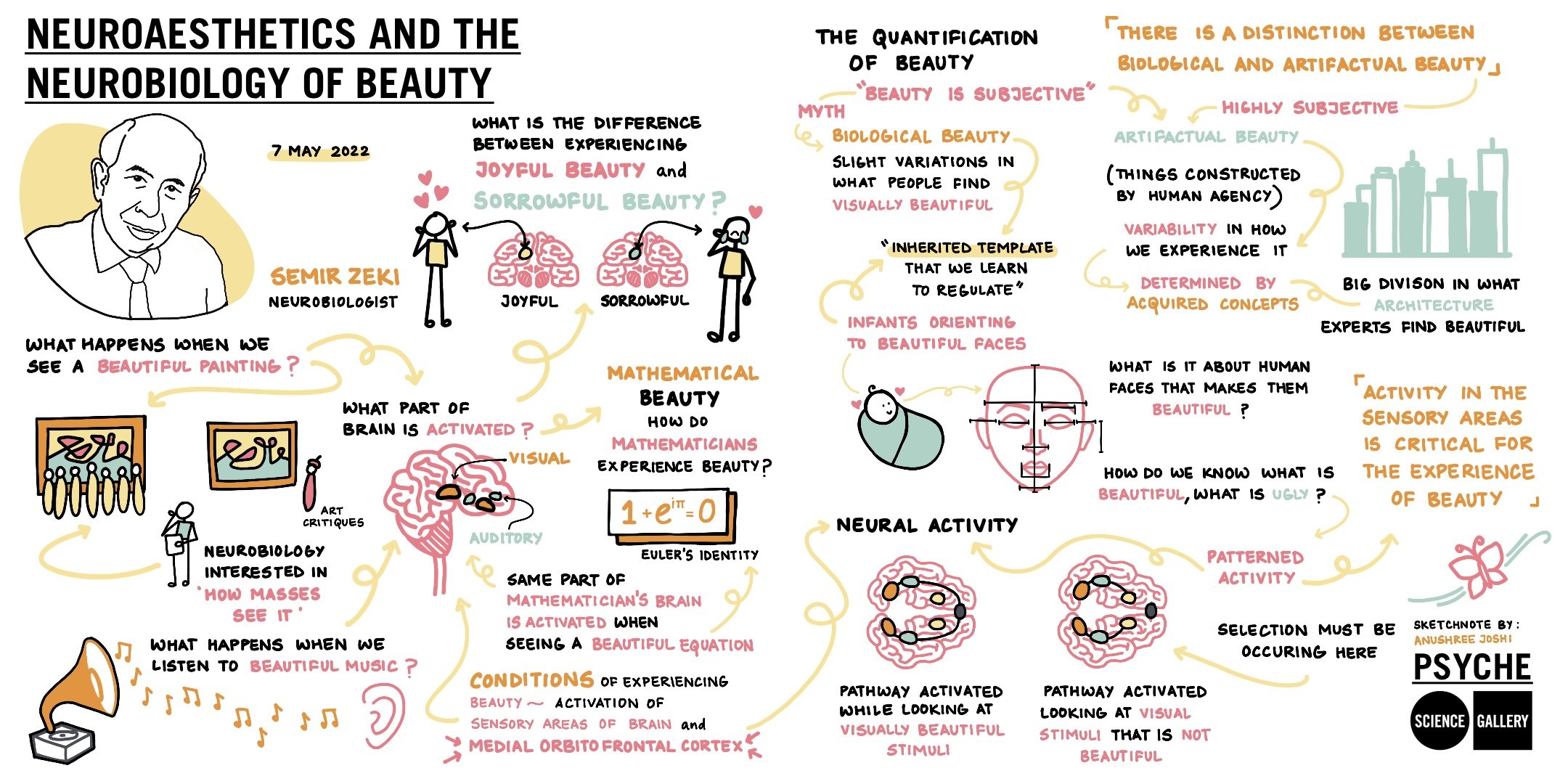Neuroaesthetics and the Neurobiology of Beauty
Neuroaesthetics seeks to understand which brain systems are engaged during the experience of beauty. In approaching the question, neuroaesthetics makes two cardinal assumptions. The first is that beauty can be regarded under two broad headings, biological (as in the beauty of human faces or bodies, landscapes, biological motion or mathematical formulations) and artifactual (as in man-made objects, including cars, planes, boats, and utensils). The experience of biological beauty is broadly similar among all humans and therefore not quite as subjective as is generally assumed, while the experience of artifactual beauty is more variable.
The second assumption is that all humans, regardless of race or culture, are capable of experiencing beauty and that identical brain mechanisms are engaged in all when they experience beauty. Experimental evidence shows that regardless of source (i.e. whether it is visual, musical, moral, or mathematical), and regardless also of whether the beauty experienced is joyful or sorrowful, the experience of beauty correlates with quantifiable activity in a specific part of the emotional brain.
Semir Zeki’s lecture explored these assumptions in the context of his research, providing a glimpse of how we comprehend beauty.
About the Neurobiologist
Semir Zeki is Professor of Neuroaesthetics at University College London, having previously served as Professor of Neurobiology there. He has specialised in studying the organisation of the visual brain in primates and, more recently, in a study of the brain mechanisms engaged during aesthetic and allied experiences, including the experience of beauty, desire, and love. He is a Fellow of the Royal Society and a member of the American Philosophical Society, among other learned bodies. He has published several books which, collectively, have been translated into eight languages. These include A Vision of the Brain (1993); Inner Vision: An Exploration of Art and the Brain (1999); Splendors and Miseries of the Brain (2009) and La Qûete de l’essentiel (1995) with the late French painter Balthus.





